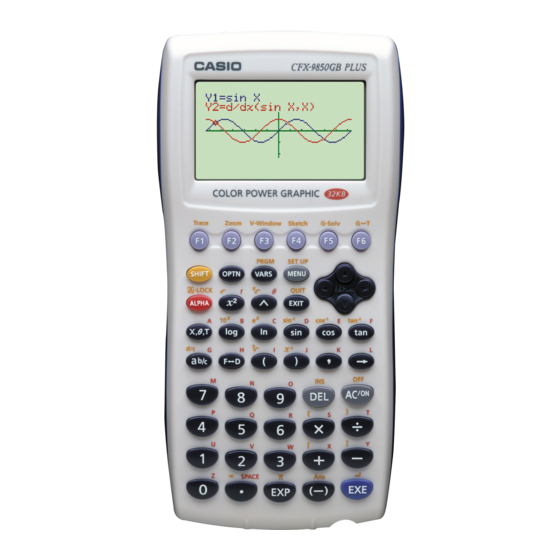- ページ 3
電卓 Casio CFX-9850G PLUSのPDF グラフマニュアルをオンラインで閲覧またはダウンロードできます。Casio CFX-9850G PLUS 12 ページ。 6. matrix calculations
Casio CFX-9850G PLUS にも: ユーザーマニュアル (18 ページ), 通信マニュアル (13 ページ), プログラム・マニュアル (18 ページ), 最初に読むマニュアル (13 ページ), 機能マニュアル (14 ページ), グラフマニュアル (8 ページ), グラフマニュアル (6 ページ), グラフマニュアル (12 ページ), グラフマニュアル (12 ページ), グラフマニュアル (12 ページ), グラフマニュアル (10 ページ), 計算マニュアル (13 ページ), 計算マニュアル (18 ページ), 計算マニュアル (15 ページ), 複素数マニュアル (6 ページ), 計算マニュアル (6 ページ), 計算マニュアル (20 ページ)

